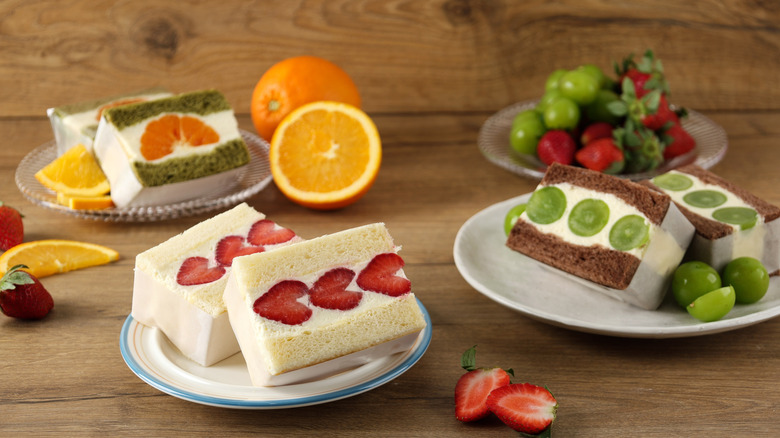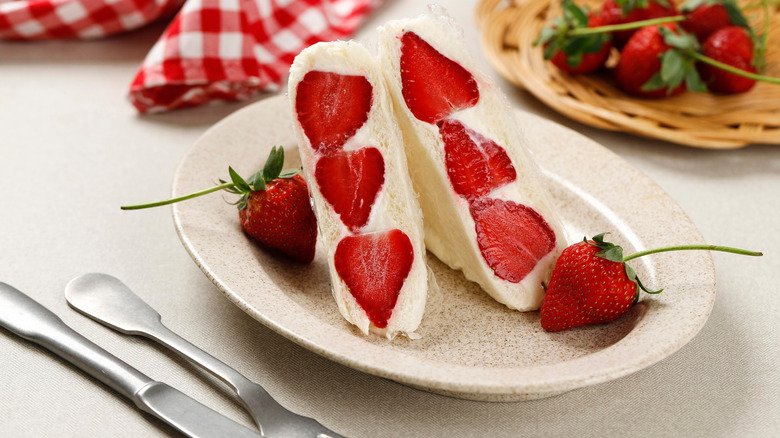The Trendy Origins Of Japan's Famous Fruit Sando
The iconic Japanese fruit sando: Two pieces of soft white bread filled with fluffy whipped cream and delicious-looking fruit. It's not your typical sandwich, but that hasn't stopped it from going viral. Today, the fruit sando has become an icon of the Japanese konbini (convenience store), and you've probably seen them plastered all over your Instagram feed. However, this viral sensation was invented long before the age of social media. That's right, the fruit sando has been trendy since the early 1900s.
The first thing you should know is that the Japanese don't play around when it comes to fruit. This is because some fruit like Bijin-hime strawberries are surprisingly expensive in Japan. The aesthetic quality and appearance of fruit is valued above all else and farmers take great care in their cultivation. When fruit became more accessible to the public in the Taishō era (1912 to 1926), it was seen as a luxury good. This made fruit a very popular gift and many fruit shops started to pop up all over Japan. Eventually, these fruit shops opened up fruit parlors (think cafés, but specializing in fruit) which served high-quality, western-inspired fruit desserts like parfaits, fruit tarts, and cakes. As Japan was very keen to embrace foreign culture during the late 19th and early 20th century, fruit parlors came to be extremely popular, and it was in these trendy fruit parlors that the fruit sando was born.
How do you make a fruit sando?
Sandos should be made with shokupan bread (also known as Japanese milk bread). It's similar to Western white bread but with a much sweeter, milkier taste and a soft, pillowy texture. (As an aside, Japanese milk bread can be used to easily upgrade tuna sandwiches.) You'll be able to find this bread in any Japanese bakery. For the whipped cream, it's important that you get the texture spot on. What you want is a firm but fluffy texture. To make whipped cream at home, whisk together heavy cream, sugar, and vanilla extract. If you're unsure of what texture you should be looking for, use this pro tip: When lifting the whisk the cream should stand up straight without falling back down. (You can also add a little mascarpone to the mixture to improve its integrity.) Finally, slice your fruits and place them on top of the cream. For the most aesthetically pleasing sando, mix and match your fruits based on their shapes and colors. Remember: Making a fruit sando is all about creating that beautiful cross section.
No matter how tempting it is to eat your sando straight away, you first need to wrap it in plastic and place it in the fridge for an hour. This allows the flavors to combine and makes slicing the sandwich a much less messy process (trust us – that cream can get everywhere). When the hour is finally up, use a sharp serrated knife to slice your bread into two triangles and enjoy your delicious, Instagram-worthy snack!


